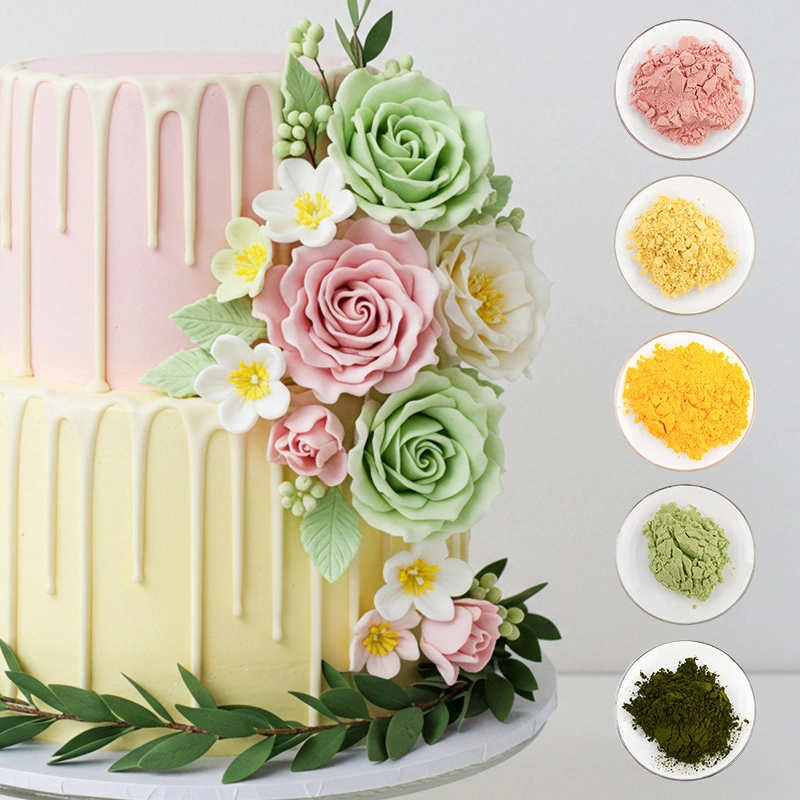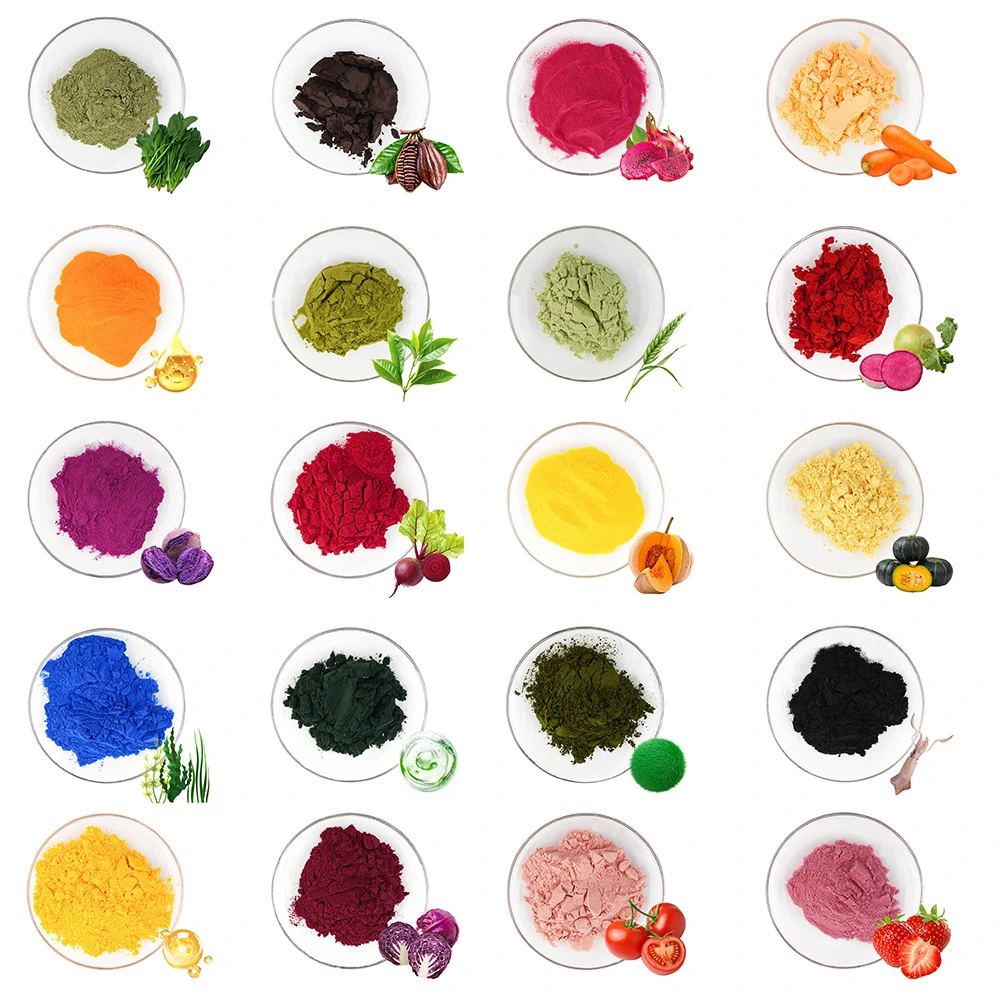
Exploring the Benefits of Natural Food Coloring Powder
Why Choose Natural Over Fake Colors
Natural food coloring powder is a big hit with folks who love healthy eats and awesome baking. Fake dyes come from oil and weird stuff, but natural colors are made from fruits, veggies, and plants. That makes them way safer and better for the earth if you wanna skip yucky chemicals in your snacks.
This powder is super cool for bakers who mean business. It’s easy to use and stays bright. Plus, it lasts forever on your shelf, stores easy, and makes colors pop without needing extra junk to keep it fresh.
Health and Safety Stuff for Food Colors
Health’s a huge reason people pick natural food coloring powder. Fake dyes can make some folks sneezy or act weird. But colors from real foods are usually super okay, say the food rule people. You just gotta use them the right way.
Picking the right natural color is key to making your treats look amazing. Whether you’re baking at home or making fancy desserts, knowing how powder colors beat liquid ones helps you get awesome results. Powders let you choose how bright you want it without wrecking your recipe.
How Natural Colors Help the Planet
Natural colors are way nicer to the earth than fake ones. Making them uses less gross stuff and helps grow more kinds of plants like beets, turmeric, spinach, and purple sweet potatoes. That’s great for farms and nature.
Unlike fake dyes that use stuff we can’t reuse, plant colors break down on their own. They don’t make a big mess when you make or toss them out.
Common Stuff for Homemade Natural Food Coloring
Kitchen Goodies That Make Bright Colors
You can find things to make natural colors right in your kitchen. Tons of stuff in your pantry or fridge can turn into pretty powders that make your food look cool and add healthy bits, too.
Beetroot for Red and Pink Hues
Beetroot is like the king of red colors. Dry it and grind it into powder, and you get a super bright pinky-red that’s awesome for icings, doughs, or smoothies. Beet powder doesn’t just look neat—it’s got healthy stuff like betalains.
Turmeric for Yellow Shades
Turmeric root gives you a sunny yellow color because of something called curcumin. A tiny pinch of turmeric powder makes batters or rice dishes glow all warm and golden. But it’s got a strong taste, so don’t use too much in sweet stuff.
Spinach and Matcha for Green Tones
Green veggies like spinach can be dried into powders full of chlorophyll for green goodies. Matcha green tea powder is another fun pick. It looks sweet and has healthy stuff like antioxidants.
Purple Sweet Potato and Blueberries for Blues and Purples
Purple sweet potatoes make awesome purple colors when powdered, thanks to anthocyanins. Freeze-dried blueberries can be ground into a deep blue-purple powder that’s great for frostings or yogurt swirls.

Tips for Making Your Own Plant-Based Powders
You can make your own food colors two ways: powders or thick liquids. Powders are the easiest because they mix in fast and are already pretty strong, so you get bright colors quick.
Here’s how to whip up natural food coloring powder:
- Grab freeze-dried fruits or veggies.
- Smash them up in a spice grinder till they’re really fine.
- Keep them in tight jars away from light to keep colors popping.
For spices like turmeric or matcha that are already powders, make sure you get the food-safe kind with no extra stuff.
How to Use Natural Food Coloring Powder in Holiday Baking
Mixing Powders Into Doughs, Icings, and Batters
Powdered colors slide right into dry stuff like cookie dough or cake batter. For icings or glazes:
- Mix the powder with a little warm water or milk first.
- Stir it tons to skip any lumps.
This trick makes the color spread nice and even without changing how your mix feels.
Keeping Colors Bright When You Cook or Bake
Some plant colors can fade when they get hot. To keep them looking sharp:
- Add powders at the end of mixing if you can.
- Use a bit more color than you think you need—natural colors calm down a bit when baked.
- Mix with stuff like lemon juice to help colors like beetroot red stay bold.
Matching Colors with Holiday Flavors and Themes
Holiday baking is the best time to get wild with natural colors:
- Beetroot rocks with chocolate peppermint cookies.
- Turmeric’s great with gingerbread cakes.
- Matcha makes pistachio shortbread shine. These mixes look super festive and taste yummy, too.
Customization and Creativity with Pigment Blending
Mixing Powders to Make Your Own Colors
Mixing natural powders is crazy fun because you can make all kinds of new colors:
- Blend beetroot with turmeric for orangey vibes.
- Mix blueberry with spinach for a cool teal look.
- Play around to make colors that match stuff like spring pastels or winter sparkles.
Blending YAYANG’s Pearl Pigments with Your Color Bases
For extra holiday sparkle, try food-safe pearl dusts from Yayang. These shiny bits mix awesome with veggie-based powders for icings, especially on macarons or fondant decorations. You can make your treats totally your own!
Adding Sparkle to DIY Holiday Projects
Decorating Cookies, Cakes, and Candies with Edible Glitter Powder
Edible glitter powders from natural stuff make cookies or candies look so cool without fake junk. Brush them dry onto frosted stuff or mix into sugar syrups for hard candies like lollipops.
Note: Don’t use glowy or fluorescent pigments made for nails—they’re not okay to eat.
Making Fun Holiday Drinks with Shiny Pigments
Glow-in-the-dark pigments aren’t safe for eating unless they’re marked food-grade. But water-safe pearl pigments can add sparkles to drinks like mocktails or hot cocoa if they’re okay for food. Always check the label first.
Frequently Asked Questions (FAQs)
- What’s natural food coloring powder made from?
It’s usually made by drying fruits, veggies, herbs, or spices like beetroot, turmeric, spinach, or blueberries and grinding them into fine powders. - Is natural food coloring okay to eat?
Yep—if you get it from good places, it’s safe. It’s got no fake chemicals like artificial dyes that can make some folks sneezy. - How do I keep homemade natural food coloring powder?
Stick it in tight jars away from light or wet stuff at room temp. That keeps the colors bright and good for ages. - Can I use natural food coloring powder in chocolate?
Only use oil-safe pigments in chocolate because water-based ones can mess it up unless you mix them right first. - Will baking make natural colors less bright?
Yeah, some colors fade with heat, but using a bit extra powder helps keep them looking great, especially with stuff like lemon juice to lock in the color.
Have a blast playing with nature’s colors! Hangzhou Yayang Industrial Co., Ltd. has been a pro at making effect pigments since 1999. We’ve got Pearl Pigment (Food grade), Glitter Powder, and tons of cool stuff with our 20 years of know-how. We’re your one-stop shop for awesome effect pigments.
